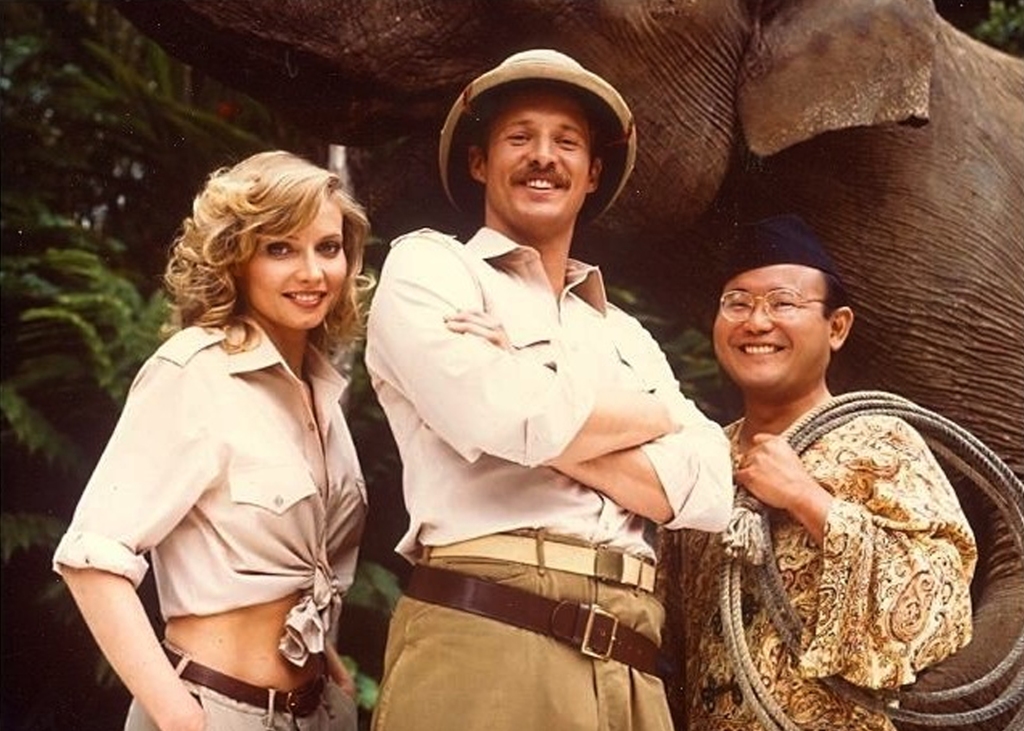
It’s very widely known and examined that following on from the enormous success of Star Wars in 1977, TV and film producers around the world weighed in with numerous examples of what can be generously described as homages and less generously as rip-offs. Less has been written about the wave of Indiana Jones wannabes that followed in the footsteps of Raiders of the Lost Ark. Perhaps it’s because Raiders itself was a homage of various Saturday morning serials and boy’s own adventure stories that George Lucas and Steven Spielberg had enjoyed in their childhood. It’d be hard to prove in a court of law that King Solomon’s Mines (1985) was a rip-off of Raiders of the Lost Ark (1981) when the H. Ryder Haggard novel that it was based on was written over a century earlier in 1880… but clearly it is.
For producers keen to rip-off a Hollywood blockbuster in the early 1980s, Raiders of the Lost Ark was a godsend, because it’s a lot cheaper to recreate the 1930s or 1940s (then less than half a century previous) than to create a galaxy far, far away. Also, as I’ve previously mentioned with King Solomon’s Mines, there was a wealth of rip-roaring source material available, some of it so old that it was in the public domain. In the late 1970s and early 1980s, the kind of special effects that typified Star Wars were coming into their own, but these analogue effects were expensive, requiring the construction of intricate models and massive camera rigs. By comparison, paying a stuntman to leap from a horse onto a moving truck was cheap. It’s all changed now, of course, with digital effects often being the cheaper alternative to paying an expensively-insured stunt performer.
It’s easy to forget that a lot of the best loved American TV dramas of the 1970s and 1980s were cash-ins of movies that were doing well at the box office: popular cop show McCloud was basically a TV version of the Clint Eastwood movie Coogan’s Bluff, The Fall Guy brought the Burt Reynolds vehicle Hooper onto the small screen and another Reynolds franchise Smokey and the Bandit was the inspiration for The Dukes of Hazzard. That’s without even mentioning Battlestar Galactica and Buck Rogers in the 25th Century, which producer Glen A. Larson insists were in production before Star Wars (hmm, I’m not convinced). This kind of jumping on the bandwagon was commonplace in those days; they did make actual TV spin-offs such as Planet of the Apes and Logan’s Run, but more often they just produced a thinly-veiled cash-in.
First off the mark for the Raiders zeitgeist was Tales of the Gold Monkey, premiering September 1982 and starring Stephen Collins (whose career had not quite taken off as expected after starring as Commander Will Decker in Star Trek: The Motion Picture) as fortune hunter and flying boat pilot Jake Cutter. Producer Donald P. Bellisario (the man who wouldn’t release Tom Selleck from his Magnum P.I. contract to play Indiana Jones) insisted that the series was based on the 1939 Howard Hawks movie Only Angels Have Wings, but it’s quite clearly influenced by Raiders of the Lost Ark. The titular Gold Monkey is a priceless artefact from the pilot episode, but it is kept behind the counter of the South Pacific dive bar owned by ‘Bon Chance’ Louie for the remainder of the series’ 22 episodes. Ron Moody played Louie in the pilot film, but declined to return for the series and was replaced by Roddy McDowell.
Tales of the Gold Monkey is a handsome-looking series that easily evokes a sense of nostalgic, exotic adventure. It ran for only one series, despite being well-received in both its home territory and Europe, largely due to its high production cost and Bellisario’s desire to move onto other projects, including Airwolf, which was also an… ahem, homage to a major motion picture, Blue Thunder (ironically, Blue Thunder was also adapted as a TV series and, of the two, Airwolf was by far the most popular). Although Tales of the Gold Monkey is very fondly remembered by those who watched it in the eighties, it’s rarely shown these days due to star Stephen Collins being involved in an underage sex scandal in 2014. However, the complete series of Tales of the Gold Monkey is still available to buy on DVD.
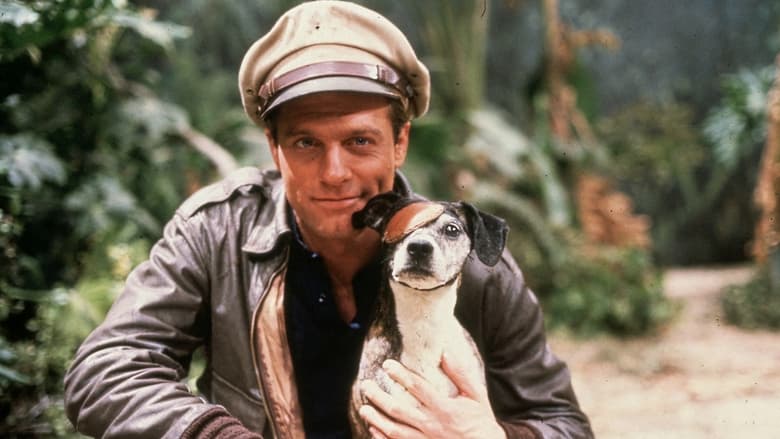
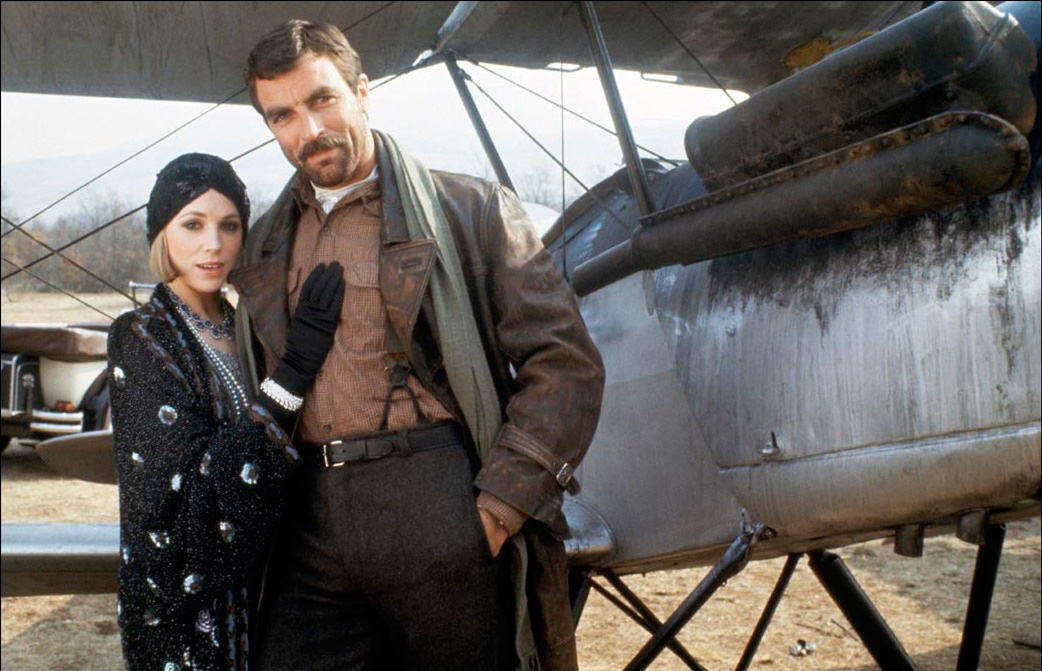
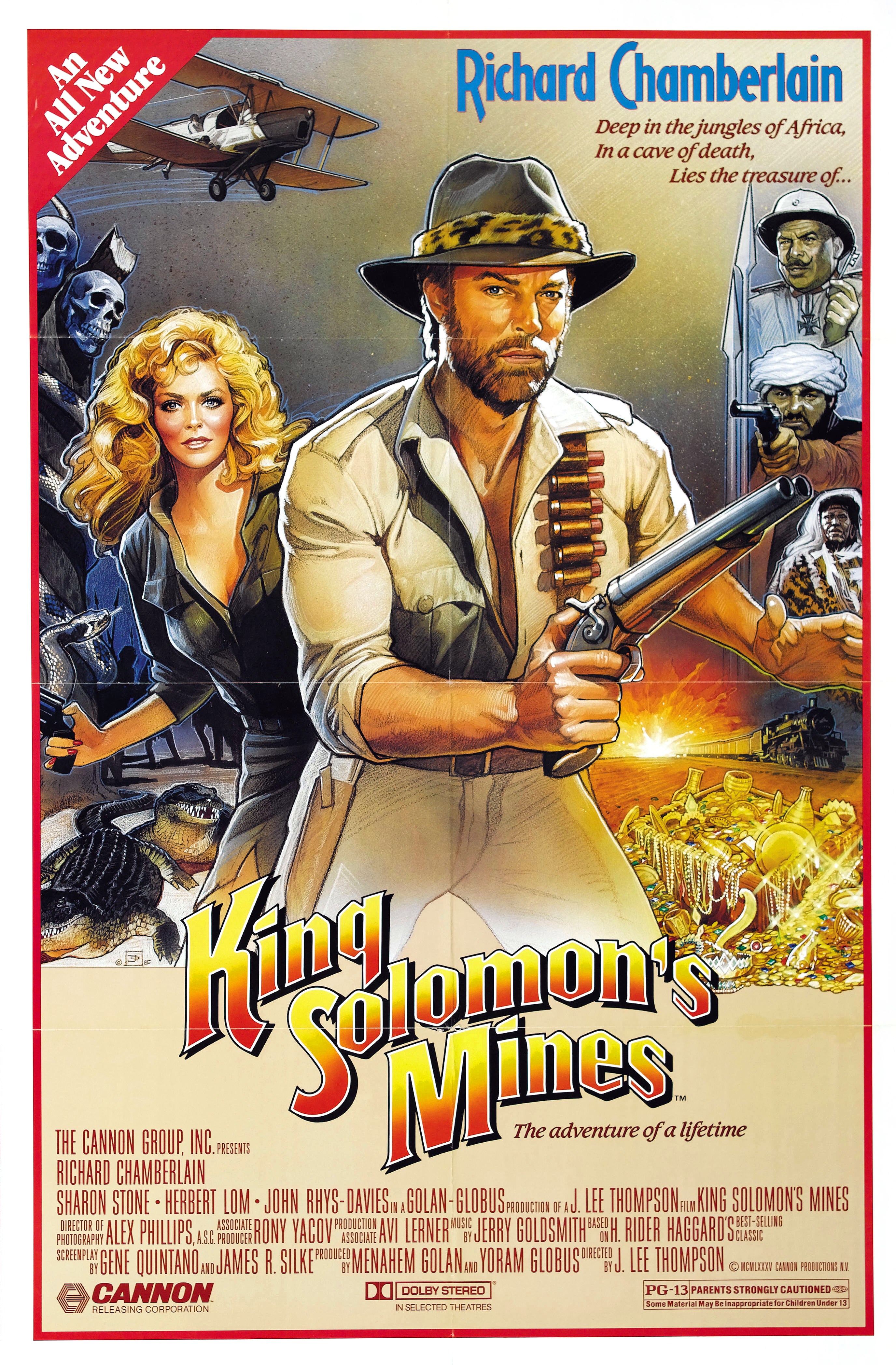
Just over a month after ABC launched Tales of the Gold Monkey, CBS countered with Bring ‘Em Back Alive starring future Babylon 5 alum Bruce Boxleitner as Frank Buck, a real life character who trapped wild animals in Asia for zoos and private collections, cataloguing his exploits in a best-selling book of the 1930s and appearing as himself in some (admittedly rather cheap) movies. Even in 1982, the public taste for the rather outdated concept of big game hunting as ‘heroic’ and the capturing of exotic animals specifically to put them in zoos was waning, so the animal hunting is played down in favour of a Raiders-tinged Republic Serial vibe, which sees a cliff-hanger at every commercial break. Unfortunately, the animal hunting is kinda the whole point of Buck’s memoirs and the series achieved poor ratings, lasting only 17 episodes.
There are also unfortunate (but entirely coincidental) similarities to Tales of the Gold Monkey, with much of the action revolving around an exotic bar and the hero being assisted by a female agent of the American government; in this case played by Boxleitner’s Tron co-star Cindy Morgan. Although Bring ‘Em Back Alive is a solid enough series, and Bruce Boxleitner and Cindy Morgan work very well together, Tales of the Gold Monkey had that bit more pizzazz and was more popular with the viewing public – although neither made it beyond one series, so it’s a bit of a hollow victory. It also didn’t help that for the latter part of its run in the States, Bring ‘Em Back Alive was scheduled against a new NBC series called The A-Team, which of course went on to be one of the biggest TV hits of the 1980s.
By 1983, Tom Selleck’s Magnum P.I. contract had loosened up enough for him to appear in movies between series and since it was well known that he had been the first choice to play Indiana Jones, Golden Harvest Pictures snatched him up to appear in High Road to China. Very loosely based on a novel by Jon Cleary, Selleck plays boozy 1920s pilot Patrick O’Malley who sobers up and makes good when he is hired by a society heiress to make a breakneck flight from Turkey to China in order to preserve her inheritance and find her father. Although production of High Road to China pre-dated Raiders, with the directorial duties passing through a number of hands including Sidney J. Furie and John Huston, there’s no doubting that the finished product was sold on the back of Lucas and Spielberg’s more successful movie.
The movie has an impressive cast of including Robert Morley, Michael Sheard and Brian Blessed, but the most intriguing thing throughout is watching Tom Selleck and imagining how he might have played Indiana Jones. It’s hard to do because the part is so associated with Harrison Ford and High Road to China’s boozy 2-fisted Irish brawler Patrick O’Malley is a very different character. Nonetheless, Selleck easily handles the role of action star and would have been thoroughly capable of playing Indiana Jones. People look back now and say that he was too associated with Magnum P.I. for people to accept him in this new role, but that’s utter nonsense because Harrison Ford was clearly associated with playing Han Solo in Star Wars at the same time as playing Indiana Jones, yet audiences embraced him in the role.
Two years later came probably the most blatant ‘homage’ to Raiders of the Lost Ark, the 1985 Cannon Films production King Solomon’s Mines starring Richard Chamberlain as literary swashbuckler Allan Quartermain. Although, as mentioned earlier, King Solomon’s Mines was based on a well-known 1880 novel of the same name by H. Ryder Haggard and had already been filmed in 1950 with Stewart Grainger and Deborah Kerr, this version was very clearly walking in the footsteps of Raiders. Cannon Films were never known for their subtlety and had an uncanny knack of throwing money at a production to have it still end up looking cheap and King Solomon’s Mines is no exception. Subsequent quotes from cast and crew imply that the movie was intended as a comedy, but contemporary promotional material clearly shows that it was being sold as an action/adventure.
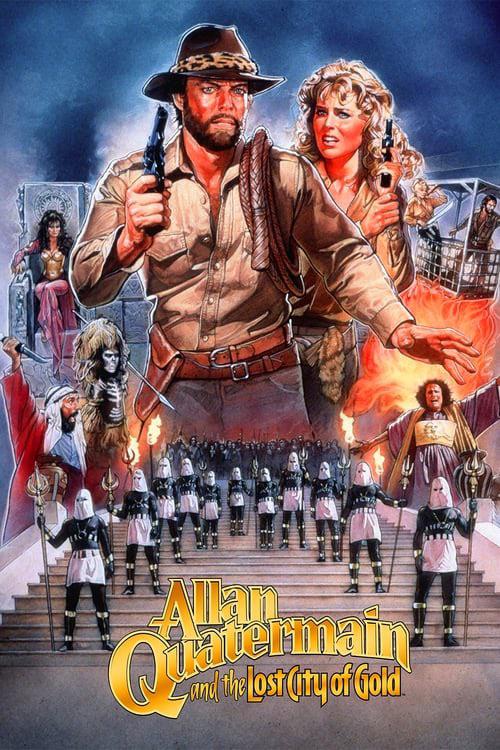
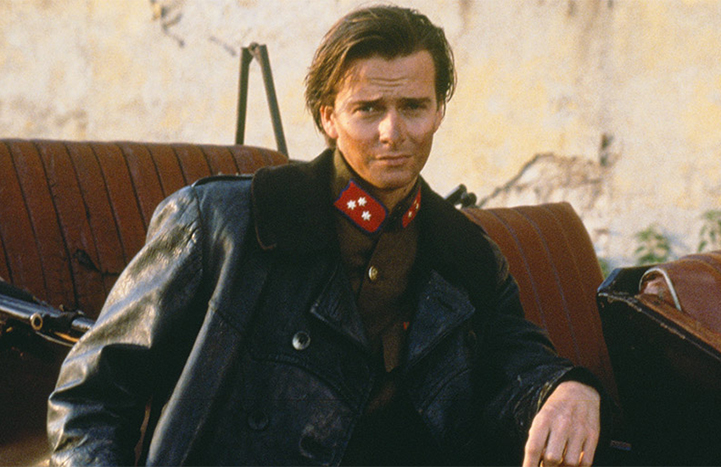

Starring alongside Richard Chamberlain as love interest Jesse Huston was a pre-breakthrough Sharon Stone (when Kathleen Turner, who was much bigger at the time following the previous year’s Romancing the Stone, allegedly turned the part down), with support from Herbert Lom and John Rhys-Davies, poached directly from Raiders of the Lost Ark. Although King Solomon’s Mines is a fairly entertaining watch, it’s desperately silly and its desire to present bigger and better stunts than the Indiana Jones series leads to ridiculous scenes like Quartermain being dragged along over the sleepers by a speeding train – which would have broken every bone in his body! I don’t think that Steven Spielberg had any sleepless nights over this production.
Filmed back-to-back and released the following year, Allan Quartermain and the Lost City of Gold is even worse, despite directorial input from The Black Hole’s Gary Nelson. In typical Cannon Films style, the budget was less than a third that of its predecessor and despite acquiring the considerable acting talent of James Earl Jones (in a questionable role as a tribal chieftain), it’s got a distinctly straight-to-video feel about it. Cannon’s Menahem Golan was still considering a third instalment as late as 2011, but this never came to anything… probably for the best. Like a lot of Cannon Films’ output King Solomon’s Mines and Allan Quartermain and the Lost City of Gold lurked in copyright hell and were unseen for many years, but the former at least has recently turned up on some of the lesser-known digital channels. An unrelated TV mini-series starring Patrick Swayze was broadcast in 2004.
The ‘final’ Indiana Jones movie Indiana Jones and the Last Crusade was released in 1989 and the fervour for rip-offs moved on to other things. The 1986 movie Biggles, based on Captain W.E. Johns’ beloved series of pulp novels about a WWI flying ace, might have seemed a perfect fit for a British Indiana Jones, but Back to the Future had taken the box office by storm the previous year, so time travel elements were added and it became known in the States as Biggles: Adventures in Time. Although Steven Spielberg produced the grandiose Young Indiana Jones Chronicles for television in the early 90s, the public taste for this kind of swashbuckling adventure was waning and would not really come to achieve the same level of popularity again until the release of Pirates of the Caribbean: The Curse of the Black Pearl in 2003.
Director Joe Johnston has championed a version of the Republic Serials format since the King of the Rocket Men-inspired The Rocketeer in 1991, following it a sort of period jungle adventure in 1995’s Jumanji. In 2011, he helmed Captain America: The First Avenger for Marvel Studios and presented it as a WWII period piece, before the character was absorbed into the very 21st century Avengers franchise. Parry Jenkins’ 2017 Wonder Woman pulls off a similar stunt for the Warner Bros. DC Universe, before that similarly shifted forward to the present day. However, none of these can really be said to be Raiders of the Lost Ark cash-ins, as they come much later in the day and veer towards the modern superhero trend.
Indiana Jones returned (under Spielberg) in 2008 with Indiana Jones and the Kingdom of the Crystal Skull and (not under Spielberg) in 2023 with Indiana Jones and the Dial of Destiny, but whilst very watchable, both have problems. Unsurprisingly, the sub-genre of ‘swashbuckling pensioner’ has failed to set the box office alight and neither of the movies has spawned a host of imitators. The Raiders of the Lost Ark-style movie, although set in the 1940s, seems to be firmly entrenched in that 1980s world of queuing round the block for an ‘event’ movie, then having to wait 6 months to watch it again on VHS – or tuning in to watch a series on TV at a certain time, with no chance of seeing it again until the re-run if you missed it. It was fun while it lasted, but given that Raiders of the Lost Ark is now as old as the setting of Raiders of the Lost Ark was in 1981, we should probably let sleeping dogs lie.
